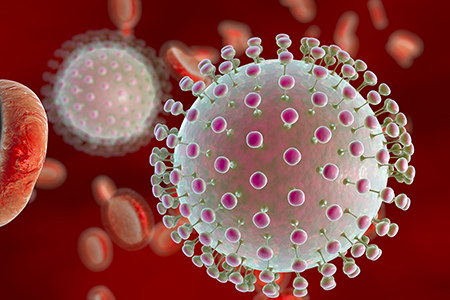 Researchers at the Department of Medicine, Washington University School of Medicine published a paper demonstrating that Zika virus could be transmitted sexually. "In addition to transmission by mosquitoes," they report, "ZIKV can be detected in the seminal fluid of affected males for extended periods of time".
Researchers at the Department of Medicine, Washington University School of Medicine published a paper demonstrating that Zika virus could be transmitted sexually. "In addition to transmission by mosquitoes," they report, "ZIKV can be detected in the seminal fluid of affected males for extended periods of time". They evaluated the consequences of infection in several strains of mice, including C57BL/6, congenic Rag1−/−, and congenic Axl−/−. They observed "persistence of ZIKV...in the testis and epididymis of male mice, and this was associated with tissue injury that caused diminished testosterone and inhibin B levels, and oligospermia. ZIKV preferentially infected spermatogonia, primary spermatocytes, and Sertoli cells in the testis, resulting in cell death and destruction of the seminiferous tubules".
The authors conclude that establishing a model of male reproductive tract injury after ZIKV infection "will allow the rapid testing of new classes of therapeutic agents or vaccines to mitigate or prevent disease".
Animal Models for Zika Virus
Helen Lazear and Mark Heise, of University of North Carolina, wrote a comprehensive review on the subject of animal models for use in studying Zika virus infection. "Significant need exists for appropriate animal models for studying Zika Virus", they conclude, while exploring the question of whether standard laboratory models reproduce aspects of human disease.While no mouse model may fully replicate infection by Zika Virus in humans, the need to establish mouse models of the virus is urgent. Zika is a significant threat to human health, and news of its possible sexual transmission suggests we have much to learn about its pathology.






.jpg)

.jpg)
.jpg)
.jpg)
.jpg)





.jpg)
.jpg)


.jpg)



.jpg)




.jpg)

.jpg)
.jpg)





